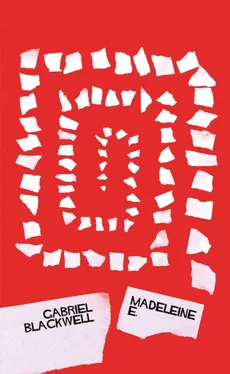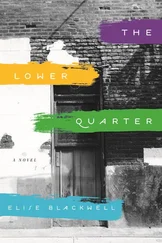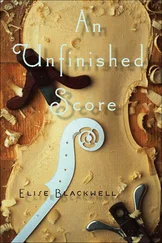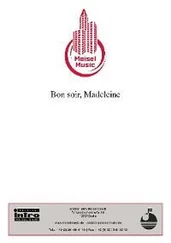Gabriel Blackwell - Madeleine E.
Здесь есть возможность читать онлайн «Gabriel Blackwell - Madeleine E.» весь текст электронной книги совершенно бесплатно (целиком полную версию без сокращений). В некоторых случаях можно слушать аудио, скачать через торрент в формате fb2 и присутствует краткое содержание. Год выпуска: 2016, Издательство: Outpost19, Жанр: Современная проза, на английском языке. Описание произведения, (предисловие) а так же отзывы посетителей доступны на портале библиотеки ЛибКат.
- Название:Madeleine E.
- Автор:
- Издательство:Outpost19
- Жанр:
- Год:2016
- ISBN:нет данных
- Рейтинг книги:4 / 5. Голосов: 1
-
Избранное:Добавить в избранное
- Отзывы:
-
Ваша оценка:
- 80
- 1
- 2
- 3
- 4
- 5
Madeleine E.: краткое содержание, описание и аннотация
Предлагаем к чтению аннотацию, описание, краткое содержание или предисловие (зависит от того, что написал сам автор книги «Madeleine E.»). Если вы не нашли необходимую информацию о книге — напишите в комментариях, мы постараемся отыскать её.
Madeleine E. — читать онлайн бесплатно полную книгу (весь текст) целиком
Ниже представлен текст книги, разбитый по страницам. Система сохранения места последней прочитанной страницы, позволяет с удобством читать онлайн бесплатно книгу «Madeleine E.», без необходимости каждый раз заново искать на чём Вы остановились. Поставьте закладку, и сможете в любой момент перейти на страницу, на которой закончили чтение.
Интервал:
Закладка:
…
Robin Wood says (and then reaffirms in his “Endnotes for Earlier Editions”) that when Scottie looks down from the stepstool in Midge’s apartment, he sees the same alleyway into which the policeman has fallen to his death. Does Scottie hang from Midge’s gutter in the prologue, then, or perhaps from across the way? Does he, in fact, hang just outside Midge’s window? (Does this give us a clue as to how he might have gotten down?) Spatially, this seems impossible. And watching it myself, I really can’t see the similarity Wood must have seen, unless perhaps we are now meant to be on the opposite side of that alley in Midge’s apartment. It isn’t merely that the light has changed (it has, from late dusk — almost evening but not quite, the light tinted blue, indicating that the sun has not yet completely set (or that the filmmaker is shooting day for night) — to the bright light of noon or shortly before, as though the movie was told in real time rather than the accelerated time it seems to be occupying), but also that there are several fire escapes in Midge’s alleyway that I don’t see at the beginning of the film. There, the buildings fall straight downward without interruption — as does the policeman. The angle at which the camera is set, too, is different, though this might go towards proving Wood’s point rather than refuting it, if the camera’s angle is meant to cover up the similarity. And look at Midge’s near-panoramic view; for Scottie’s leap (the policeman’s leap, the pursued man’s leap) from one building to another to have been at all feasible, this window ought to be facing a wall. What can Wood possibly mean, then? That Scottie believes this to be the same alley? That he perceives it as the same alley?
For all of the difficulties presented in taking such a statement literally, Wood’s reader is never given any reason to doubt that it is meant to be taken literally. And, if only as a thought experiment, it is more interesting to take Wood at his word: This is the same alley. The policeman has fallen from the roof of Midge’s building. Scottie has hung from its gutter. The tragedy (perhaps also the rescue) takes place right outside, and, when Scottie looks down from the stepstool, he sees what he sees when looking down from the gutter. He is revisiting the scene of a crime. Because doesn’t that then retroactively put Midge in Scottie’s (future) position (at Mission San Juan Bautista) with regards to the policeman/Madeleine? Unaware of what is happening above, she hears a cry and looks out her window just in time to see a body falling past. Was that.? Can that possibly have been.? We can imagine her then rushing to the window, looking down to the alley just as Scottie will later (that is, now, in this scene) look down from the very place she is standing, from the slightly-higher vantage of her stepstool, just as Scottie will (later still) look down from the tower window to the tiles of the roof of the Mission San Juan Bautista. Below, in place of Madeleine Elster’s body, the policeman’s. In place of Judy Barton running up the stairs to the top of the tower, the pursued man crossing the rooftops. In place of Gavin Elster tossing his wife’s body from the tower, Scottie reaching out to the policeman and watching him go over. The policeman become Madeleine. Midge become Scottie. Scottie become Elster. Has Midge tried to make someone over, too, or fallen in love with the wrong person? Undoubtedly, she has. Is the policeman, like Judy’s Madeleine, a fake? Who has actually fallen? What would be Scottie’s motive in getting rid of the policeman, or in seeming to get rid of him? Who or what is actually being sacrificed?
…
We become unpleasant to ourselves the moment we gain / some distance / from what we were.
(Martha Ronk, Vertigo )
…
Not that I did this often, but on those occasions when I wanted to see if anyone was selling a used copy of Critique of Pure Reason , the book I had spent my early thirties writing (intending to, I guess, inflate my ego if the price had climbed from $1.59 to $1.95; or, if the price had gone down instead, to feel sorry for myself, having passed into obscurity without ever really having climbed up out of it), that book was always the only thing listed under my name and was always alone on “Amazon’s Gabriel Blackwell Page.” But now the elevator on the right side of the browser’s window had shrunk to half its usual size and there was at least one more listing below the one for Critique . I scrolled down, expecting to find a copy of a journal I had appeared in but instead found two more entries, books, complete with listing pages of their own. The first was called Shadow Man and the second was called The Natural Dissolution of Fleeting-Improvised-Men . Both were out of print and unavailable. Neither had so much as a single review on the site, but, when I searched elsewhere, I found that they had attracted a very modest amount of attention when first published — as much, it seemed, for their manner of treating their subjects as for their dubious literary qualities. Google came up with seven reviews, all in obscure magazines; one of them mentioned Critique of Pure Reason . And the bio on the listing page for The Natural Dissolution of Fleeting-Improvised-Men , with its uncanny resemblance to my own bio, raised even more questions: Who could have done this? And why “Gabriel Blackwell”? Why pick on me, I thought? Who was I? Why had this happened to me?
…
Is Midge, then, Wood’s “great abyss”?
…
There is half a woman’s head (blonde) hanging on Midge’s wall, next to the window but facing away from it, the same direction Carlotta faces in the portrait. In the crossfade at 00:38:00, Madeleine, in profile, faces the opposite direction.
…
When we see a face, it’s basically always the half of it. A subject is a partial something — a face, something we see — behind it, there is a void, a nothingness. And of course we spontaneously tend to fill in that nothingness with our fantasies, about the wealth of human personality and so on and so on. To see what is lacking in reality, to see it as that — there, you see subjectivity. To confront subjectivity means to confront femininity. Woman is the subject; masculinity is a fake. Masculinity is an escape from the most radical, nightmarish dimension of subjectivity.
(Zizek, The Pervert’s Guide to Cinema (film))
…
This forgetting or not noticing is an authentic and integral part of watching any film — this book is an account of watchings, rememberings, misrememberings, and forgettings; it is not the record of a dissection.
(Geoff Dyer, Zona )
…
The writing of novels, I think, is so beside the point, isn’t it? One writes novels to write the author of the novel.
(Michael Martone, Four for a Quarter )
…
A book is the writer’s secret life, the dark twin of a man: you can’t reconcile them.
(William Faulkner, Mosquitoes )
…
Look in the mirror. That’s you and not you, after all, because the person in your mind isn’t the person in the world. And if you don’t know this already, you will.
(Ross, Mr. Peanut )
…
Even when we attempt to be natural, we are often imitating what we regard as natural, which often amounts to what art has taught us to regard as nature.
(Wendy Doniger, The Woman Who Pretended to Be Who She Was )
…
The only things that one can use in fiction are the things that one has ceased to use in fact.
(Oscar Wilde, The Picture of Dorian Gray )
…
The view from Midge’s window is of Russian Hill; later in the film, after the scene in the Argosy Bookshop, Scottie drops Midge off at her apartment at the corner of Union and Montgomery, on Telegraph Hill. In the opening sequence, Coit Tower (which is on Telegraph Hill) can clearly be seen in the background as the three men leap from rooftop to rooftop. Later, in the scene following Madeleine’s suicide attempt at Fort Point, we see the view from Scottie’s apartment, facing Telegraph Hill, with a similar view of Coit Tower. Thus, contrary to Wood’s assertion, if at the beginning of the film Scottie is hanging from the gutter of any building that will subsequently play a part in Vertigo , it would seem that, rather than Midge’s apartment, it is his own.
Читать дальшеИнтервал:
Закладка:
Похожие книги на «Madeleine E.»
Представляем Вашему вниманию похожие книги на «Madeleine E.» списком для выбора. Мы отобрали схожую по названию и смыслу литературу в надежде предоставить читателям больше вариантов отыскать новые, интересные, ещё непрочитанные произведения.
Обсуждение, отзывы о книге «Madeleine E.» и просто собственные мнения читателей. Оставьте ваши комментарии, напишите, что Вы думаете о произведении, его смысле или главных героях. Укажите что конкретно понравилось, а что нет, и почему Вы так считаете.












